Most dogs really love going for walks. It lets them get out of the house with their beloved owners and explore the world around them. Walks are also a great way for the two of you to bond and provide necessary exercise and mental stimulation for your dog. Going for walks should be fun and stimulating for your dog. It's also important to exhibit proper etiquette when out in public and on the leash.
Here's how to walk a dog, from getting ready to go to keeping them safe while en route.
Scheduling Your Dog's Walks
Possibly the hardest part of walking your dog is finding the time to do it! When you're busy with work, family, and everything else, the day can quickly get away from you. However, walks are important to your dog's health and well-being (not to mention your own), so do your best to build your dog's walks into your daily routine. Show your dog that you're excited about getting some exercise and they will be more willing and excited to go, too.
If your dog seems bored or is acting out, it's possible that they're not getting out enough. Consider taking your dog for a full walk at least once a day.
What to Bring on a Walk
- Collar or harness
- Leash
- Small treats
- Poop bags
- Weather-appropriate clothing (for you and the dog if necessary)
You will need to choose an appropriate leash for your dog. It should be comfortable for both you and your dog, easy to handle, and not too long; four to six feet is ideal. Before walking puppies, make sure they have been properly introduced to their leash.
You might also consider a harness over a collar. Harnesses redirect any straining onto the dog's shoulders and chest rather than their neck. A harness also gives you greater control over your dog, and many dogs find them more comfortable to wear when on a leash, especially if he or she pulls.
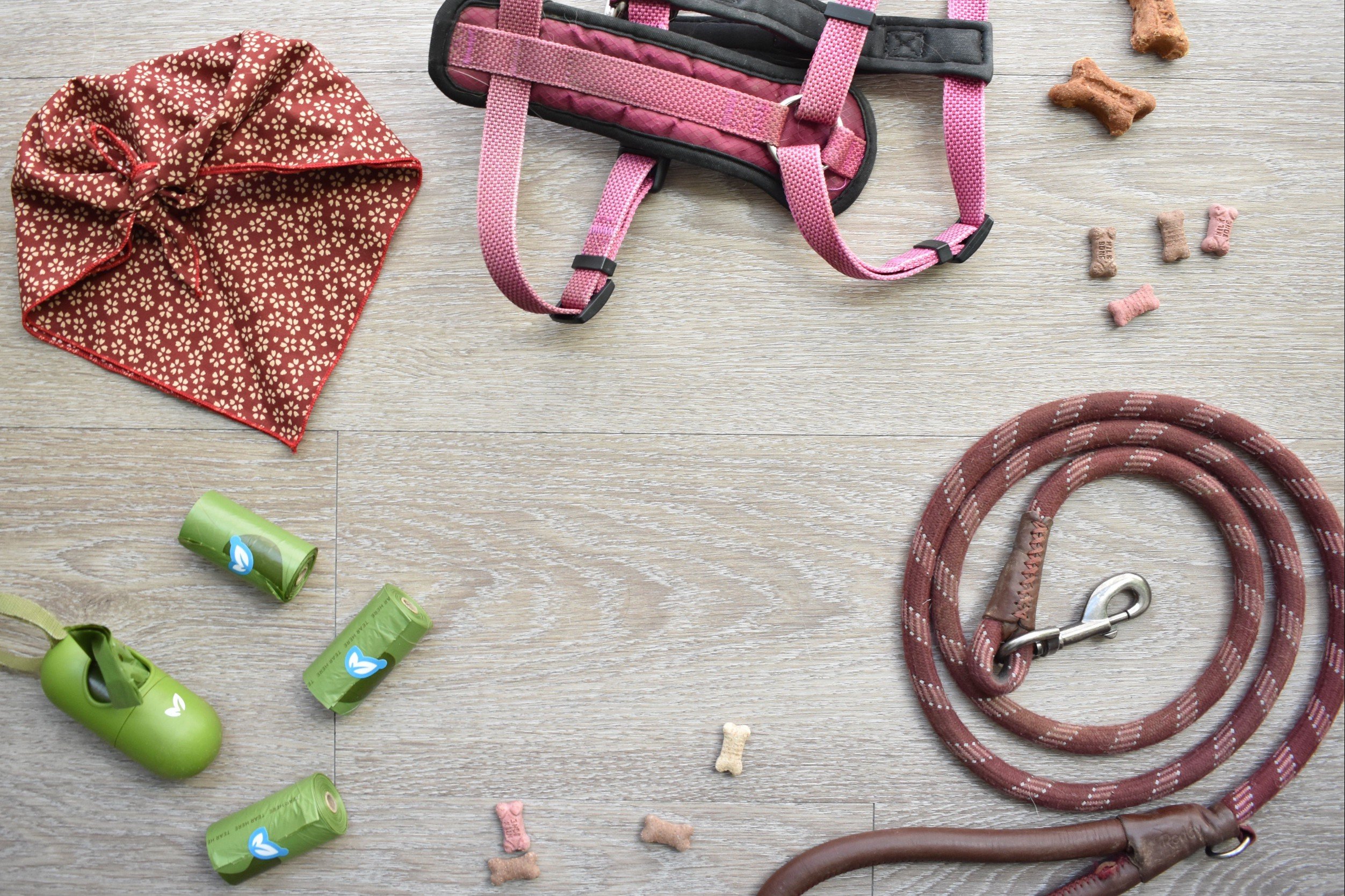
The Spruce / Missy Schrott
Paying Attention to Your Dog
When out on your walk, pay attention to the environment around you. To make the walks enjoyable and safe, you must maintain control of your dog at all times. Keep your dog close to you when you are around other dogs or people by keeping a short leash. Ideally, your dog should walk at your side and should not be walking more than a few feet ahead of you because you will not have control if a distraction comes along.
If you notice potential distractions (like cats, birds, other dogs) before your dog, you may be able to minimize their reaction. You can have your dog sit and look at you while the distraction passes. Keeping some tasty treats in a pouch or your pocket might help your dog focus on you as well.
Don't assume other people or dogs want to meet your dog. Always ask before you allow your dog to greet others. Make sure your dog is well-socialized and trained on how to properly meet other dogs and people (especially children). If they're not there yet, kindly tell people who try to approach your dog that they shouldn't. It's not rude and is for their own safety.
Cleaning Up After Your Dog
Part of being a responsible dog owner is leaving no trace that you were there. That means you should always pick up after your dog! Rather than leaving poop around the neighborhood or park, it's only considerate to others to carry poop bags with you so you can clean up. No one wants to step in poop!
It's also rude to let your dog wander into private yards. Keep your dog on the curb strip side of the sidewalk (the part between the sidewalk and the street) whenever possible. Be sure to avoid letting your dog eliminate in people's yards as well. If they do, pick it up!
Consider getting a poop bag holder that will attach to your dog's leash or stuff a few bags in your pocket before walking out the door. Deposit the filled bags in a public garbage can along your walk or wait until you get home to dispose of it.
Keeping an Eye on the Weather
Walking outside does come with its hazards and it's important to adapt your walks to the day's weather. Keep walks short in hot weather or with senior dogs. It's time to head home if your dog stops walking, begins to slow down, or shows any signs of exhaustion. Contact a vet right away if you see signs of heatstroke.
Avoid asphalt on hot summer days, as the road can burn your dog's paw pads. If it's too hot for your bare feet, it's too hot for your dog. On these days, consider a walk in a grassy park instead, and be sure to take some water with you.
In winter, protect your dog's paws from icy, snowy, or salted roads. Watch for signs that your dog's feet are getting too cold, as they're susceptible to frostbite. Doggy boots can help, but you'll have to let your dog get used to them as most dogs find boots to be far from natural.
Also, if your dog has a short coat, you might want to get a doggy sweater to keep them warm on walks. Dogs are usually more accepting of these than boots and once your dog associates the sweater with the fun of going for a walk, they will likely welcome getting dressed.
Related Article
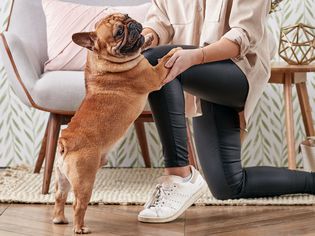
Hereâs How to Stop Your Dog from Jumping on You When Excited
Jumping up is a common behavior problem among dogs, but there are several solutions to stop a dog f
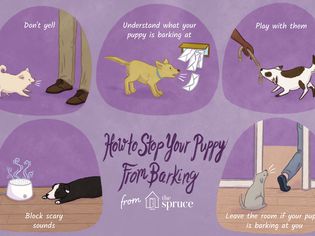
How to Stop Your Puppy From Barking
Puppy barking serves many purposes, from greeting people to a form of self-defense. But, if your pu

Becoming a Show Dog: Getting Started
Are you proud of your beautiful puppy? Have you considered showing your puppy in a dog show? The

Simple Steps to Train a Puppy to Lie Down
Why is it important to learn how to train a puppy to lie down? Dogs use certain postures natur

Puppy and Baby Introductions
Introduce your dogs and babies properly, and they'll be on their way to becoming great friends. A d

Can Dogs Eat Bread?
If you were to raid the pantry of your average American kitchen, you would in all likelihood find a
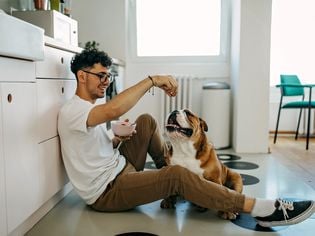
Can Dogs Eat Zucchini? Everything to Know About This Hardy Summer Squash
Can dogs eat zucchini? Yes! Zucchini is a safe and nutritious snack option they can eat in moderati
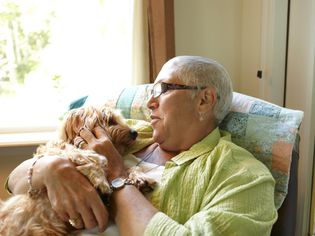
Saying Goodbye to Your Dog
Whether you have an elderly dog or simply a dog with health issues, you are likely concerned about
About Ask a Paw
We are a premier digital platform committed to delivering high-quality content to our readers. Our mission is to provide accurate, reliable, and engaging information that adds value to our audience's daily lives.
Our team consists of experienced content creators and subject matter experts who uphold the highest standards of professionalism. In an era of information overload, we curate content with care, ensuring our users receive only the most relevant and trustworthy information.
Beyond just reporting facts, we focus on depth and context. Through expert analysis, comprehensive research, and clear presentation, we help our audience gain meaningful insights and make informed decisions.
We take pride in being a trusted information source for our growing community of readers. Our user-first approach means we continuously adapt to provide content that meets our audience's evolving needs and interests.
Innovation and excellence drive everything we do. We're committed to improving our platform and services to deliver the best possible experience for our users.

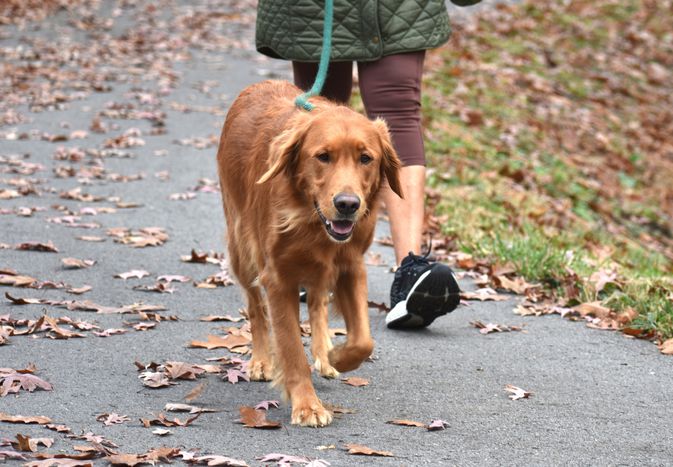
Comments on " Walking Your Dog: Essential Tips for a Hassle-Free Stroll" :